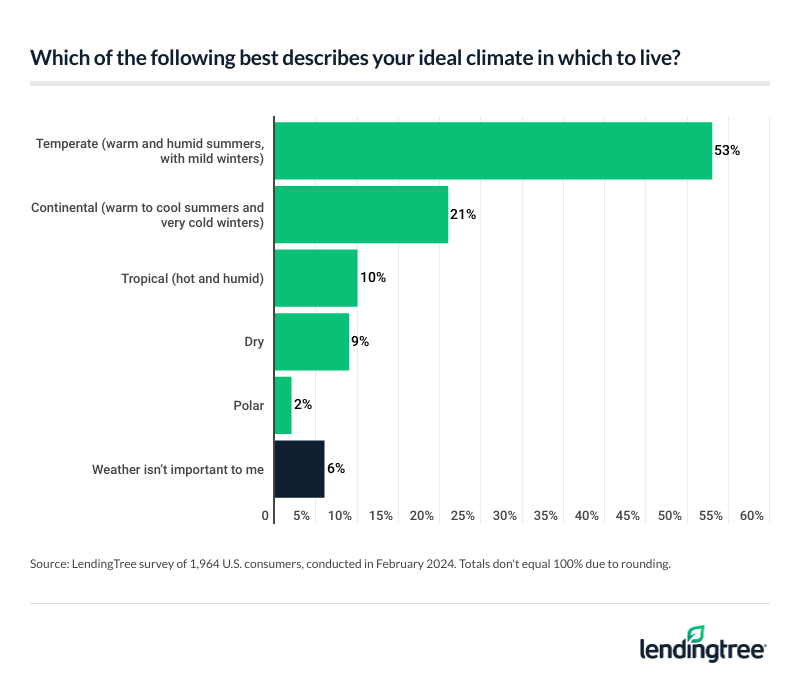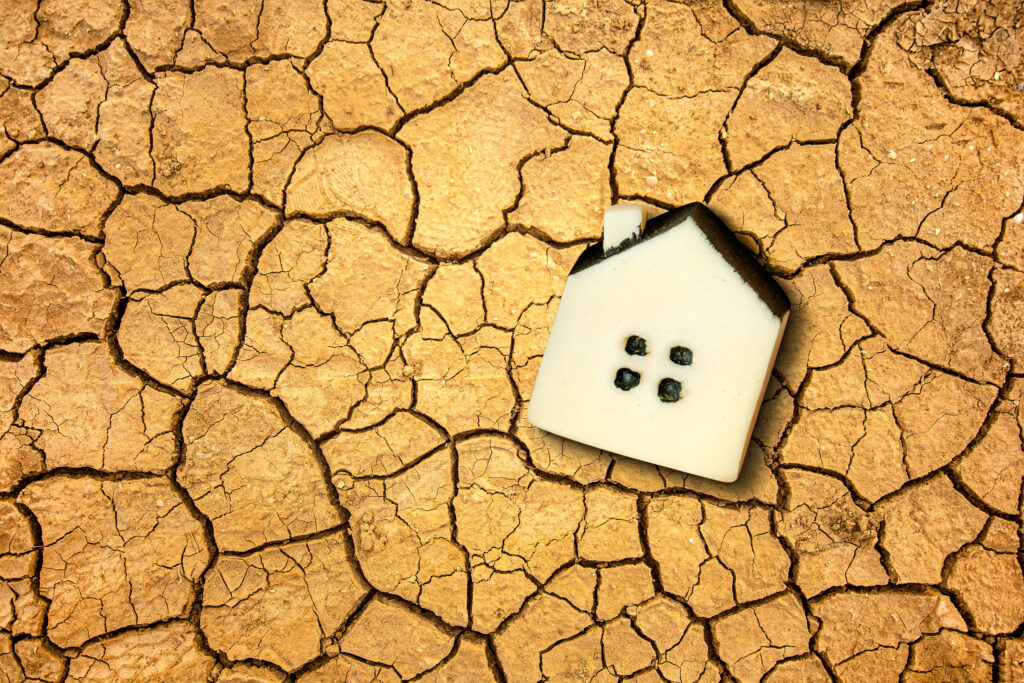A new article written by Julie Ryan Evans from LendingTree reconfirmed the fact that many people choose where to move by their preferred climate to the tune of 61% of homeowners with another 20% of prospective movers/buyers making weather their deciding factor in their relocation as well.
According to the studyby LendingTree, which surveyed 2,000 Americans, most view their climate and biome as their leading cause of happiness with their choice in housing.
Key finding by LendingTree include:
- Most Americans enjoy the climate where they live. 61% of Americans reside in a region with their ideal climate, with Westerners (72%) and Southerners (67%) the most content. For 37% of Americans, this was by design, meaning they factored in climate when deciding where to live.
- The weather outside takes a back seat to family, cost of living and health when putting down roots. Among those who don’t live in their ideal climate, 36% cite proximity to family and 26% cite cost of living as what’s keeping them away. Additionally, over a third (35%) of Americans say they or a family member has a health condition that makes certain climates more suitable.
- The grass isn’t always greener, despite “better” weather. 1 in 5 of those who don’t live in their preferred climate plan to move there in the next year, including a third of Gen Zers. However, 29% of Americans have previously moved for a better climate to later realize they didn’t like it. Almost half of those who’ve done so have since relocated.
- Planning for retirement involves more than finances for many. 39% of respondents who aren’t retired plan to relocate in their golden years to a different climate. Additionally, 32% of retirees have either already made the climate-driven decision to move or plan to do so in the future.
- A temperate climate is the most preferred among Americans, followed by continental and tropical. 40% say they prefer somewhere with consistent weather, while 34% prefer to experience the four seasons. Additionally, the number of daylight hours is a factor for some, as 37% say sunshine and daylight hours play a role in where they reside.

According to LendingTree’s findings, 61% of Americans hang their hats in their preferred climate. Still, that leaves 39% with hats hanging in climates other than their ideal weather patterns.
Where are people most content with the weather conditions? The West leads the way, with 72% of those living there reporting they reside in their preferred climate. That’s followed by those in the South (67%), Northeast (55%) and Midwest (47%).
Men are more likely to live in their preferred climate than women—63% versus 58%, respectively. Also, the more money people make, the more likely they are to live in their prime climate. While 56% of those who make less than $30,000 live in their preferred climate, 67% of those who make $100,000 or more do.
But is the climate driving people’s decisions about where to live? In most cases, no, as 63% say climate wasn’t a factor when they most recently decided where to live. That leaves 37% as fair-weather birds.
Should climate play a part in your decision as to where to live? LendingTree Senior Economist Jacob Channel says yes—to some degree.
“The environment in which you live can play a big role in your mental and physical well-being,” he says. “Owing to that, it makes sense for people to try to settle in an area with a climate they find agreeable. Your health is important, and if living in an area with a certain climate is going to mean you’re more likely to deal with problems such as serious seasonal depression or constant asthma flare-ups, it might be best to move someplace else.”
However, Channel says weather rarely should be the only factor to consider.
“You always want to be sure that whatever area you settle in is affordable to you, and in that same vein, you’ll want to be sure you can work a steady, safe job there,” he says. “You should also consider factors like how your location will impact your relationships with family, friends and romantic partners, and whether it’ll provide you with enough entertainment or recreational activities to keep you occupied.”
Click here to read the study in its entirety, including interactive graphics of the raw data.








